The lives of street trees are emblematic of the multiple entanglements that characterise the nature-society dialectic animating the ever expanding urban in the global south—entanglements that knit together the past and present, the secular and sacred, and the global and local.
Bangalore’s ecological history of growth can be roughly divided into three broad periods: pre-colonial (pre-1799), colonial (1799-1945), and post-colonial (after 1945). This historical signature determined the pattern of urban growth, and is still visible in the structure and species selection of trees in the 21st century city. The former British Cantonment was designed with trees forming an integral part of the colonial landscape. Large trees—Albizia saman (rain tree), Delonix regia (Gulmohar), Peltophorum pterocarpum (copper pod)—were brought in by British and German-trained horticulturalists from areas as far flung as Brazil, Madagascar, and South-east Asia.
These trees were prized according to a secular colonial aesthetic that favoured the ornamental over the fruiting, and the exotic over the native. Trees were thickly planted along streets, and in wooded campuses, but otherwise kept under strict control. Areas of the footpath were demarcated for plantation, an even spacing was maintained between trees, and the flowering colours of trees were selected in a careful mix, so that every part of the colonial city was bound to have some flowers in season at all times of the year. This colonial signature can be seen even today in the gentrified neighbourhoods near the heart of the Cantonment—in roads adjacent to Mahatma Gandhi Road, Bangalore’s premium commercial and shopping area—with wide footpaths, cordoned off from traffic.
These trees, largely exotic imports, are planted in an orderly, disciplined manner, and the trees stick to their allotted spaces, seeming to display a finely honed sense of decorum. These trees serve an important civic need. Despite the constant churn of old heritage buildings being torn down to make way for tall multi-story offices, these trees are much prized by residents and office goers, giving the colonial neighbourhood its integral character of a “Garden City”, as it is often termed.
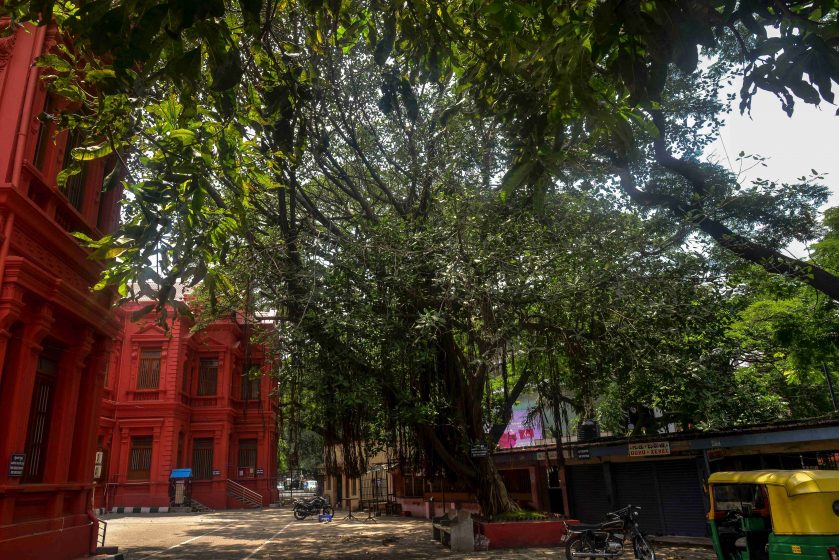
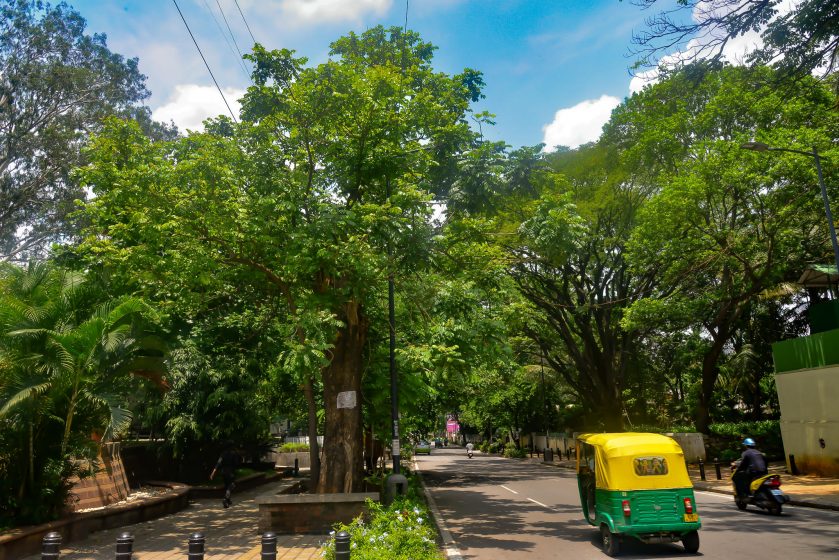
Yet adjacent to this ornamental aesthetic, a very different pre-colonial aesthetic emerges—that of the sacred. The Maha Muniswara temple, on the same road as the well contained street trees in Photo 2, is built around a sprawling Ficus. Unfettered, the tree controls the urban landscape, not the other way round. Despite its location in an area surrounded by trees, owing their existence to a colonial landscape ethic, the sacred tree, and its associated temple intrude on the road, asserting their right by pre-existence to appropriate urban space, and reclaim the city for their own.
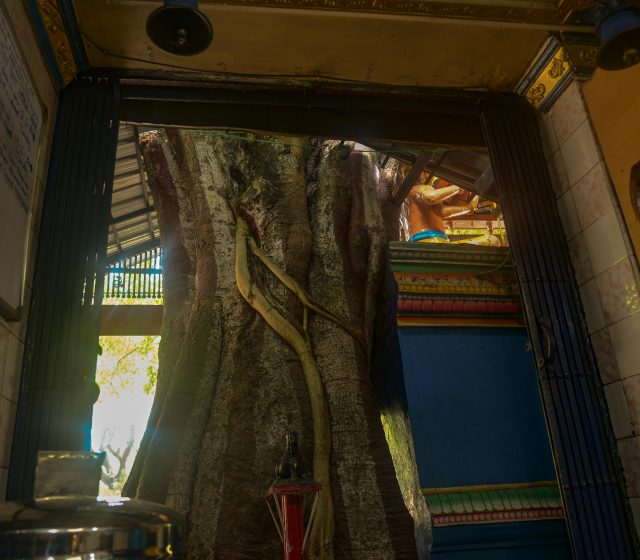
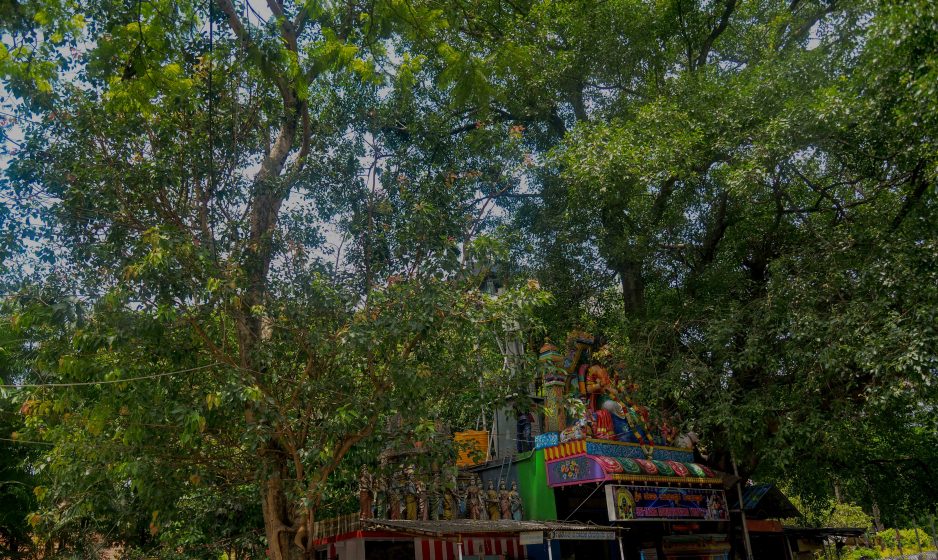
In contrast to the central parts of the city Cantonment—areas of south Bangalore between the neighbourhoods of Basavanagudi and Jayanagar—display a different street tree aesthetic. These areas constitute a well-planned mix of commercial and residential neighbourhoods, distinguished from each other by the size of the roads. Designed by colonial architects, these urban plans did not just “accommodate” street trees—trees and parks were central to the design and layout of these spaces, giving them their quintessential character. For decades in this highly urban area, it was not buildings but street trees that dominated the skyline, dwarfing the shops and bungalows that lined the streets. Even now, traces of such a past can be seen on several streets.
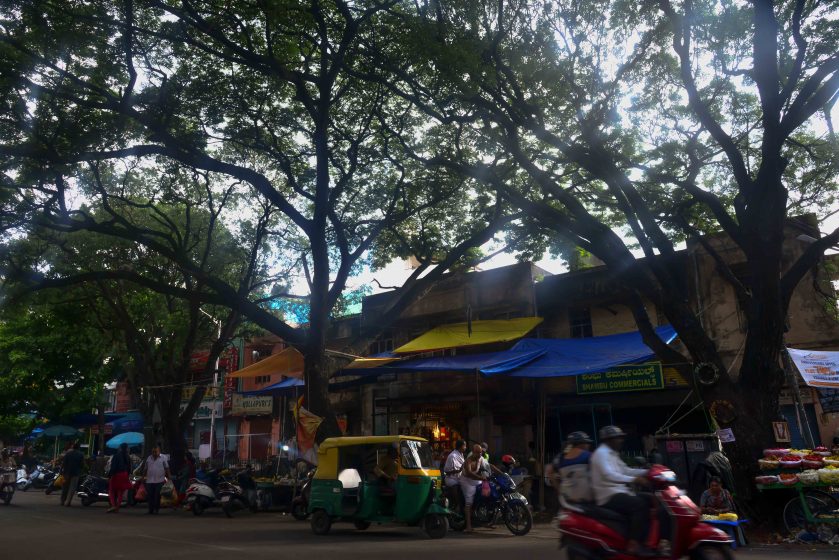
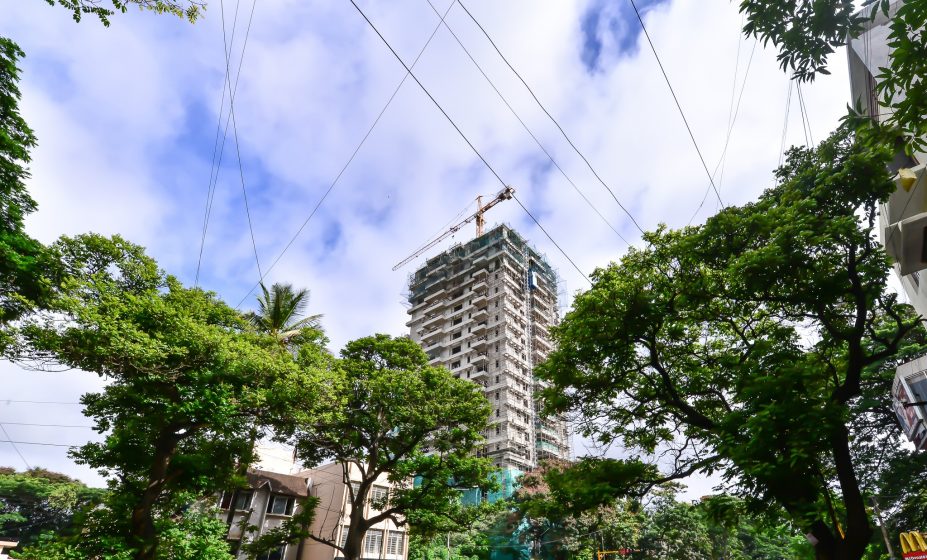
In other streets, single floor buildings have given way to multi-floor shops with homes above—yet the trees grow taller still.
Less gentrified than the Cantonment, these parts of the city are also commercial spaces bustling with activity, but of a different nature. For centuries, Bangalore has been known as a city of coconuts. Coconut trees can still be seen across the city, and are needed for everyday cooking. Tender coconut water is sold across Bangalore in the hot season, believed to be good for cooling the body and preventing heat strokes in the soaring summer sun. These fruits spoil when left out in the sun for too long. Coconut vendors nearly always seek out a convenient street tree to shade their produce. So do vegetable and fruit sellers, when they can. Fortunately these older parts of the city retain their tree cover, and permit seller and buyer alike to benefit from the shade that these large trees provide, especially during the scorching mid-day sun. Attempts have been made to regulate these trees, as in the Cantonment—planting them at well-spaced intervals. But these “Indian” parts of the city seem to have integrated street trees more seamlessly into local identities, placing flyers on them, using them to advertise roadside flat tyre repair stands, and for a variety of other innovative purposes. In a city where motorbike riders often ride on the pavement to avoid traffic jams, one seller of pirated DVDs said that following a recent accident he preferred to position himself next to a large tree – so that bikers, avoiding the tree, would avoid hitting him as well!
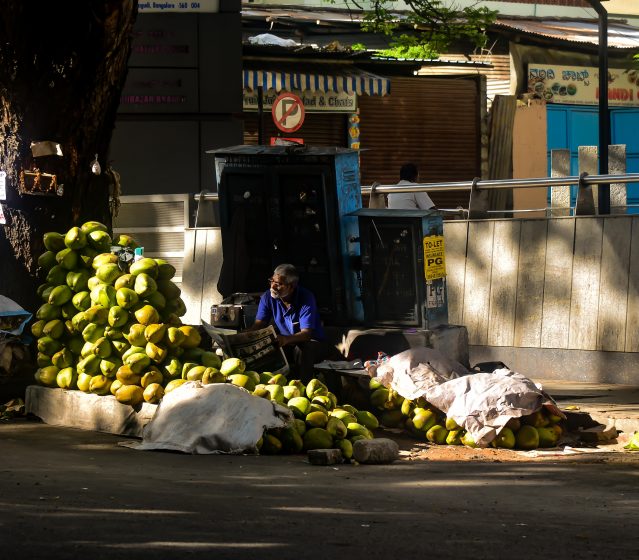
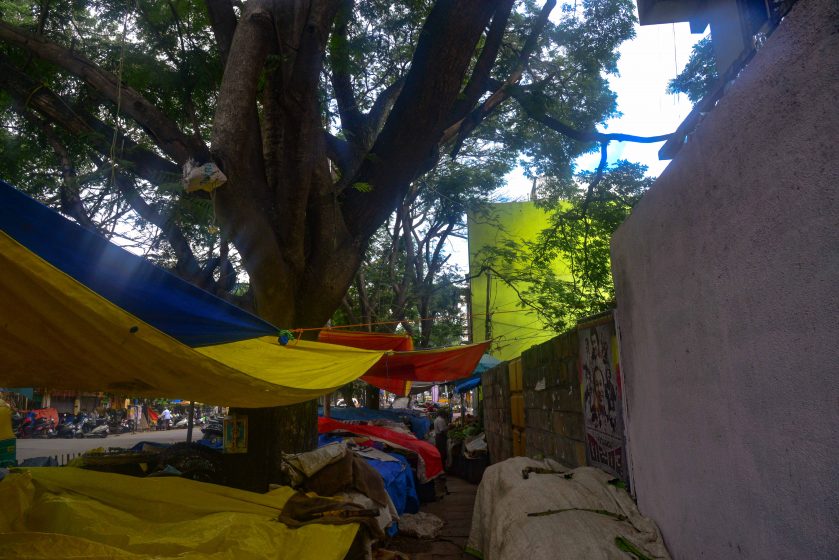
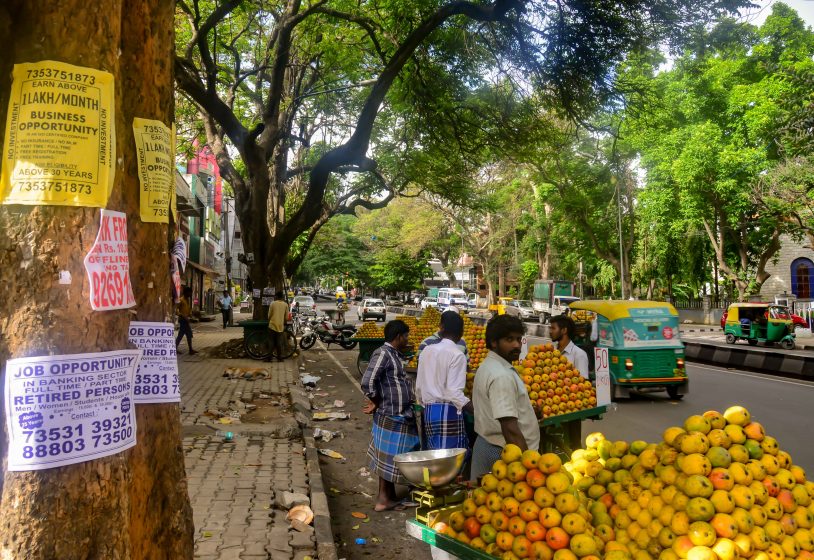
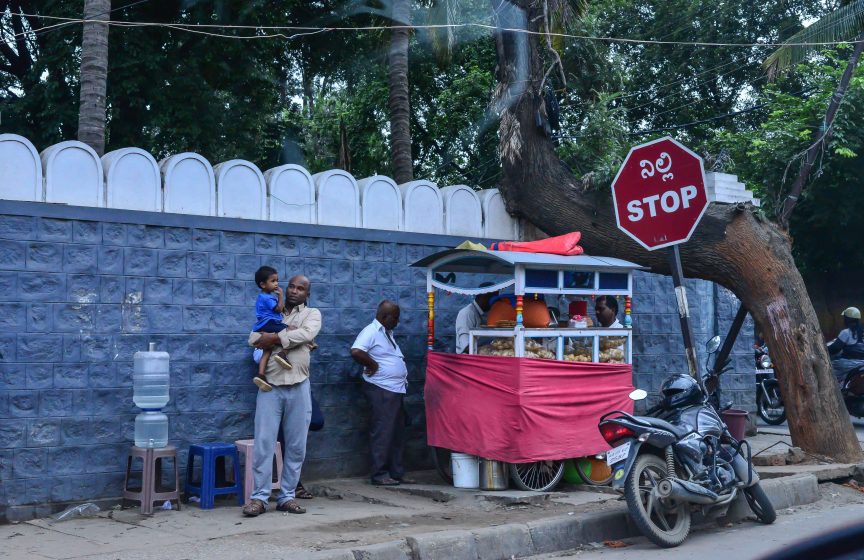
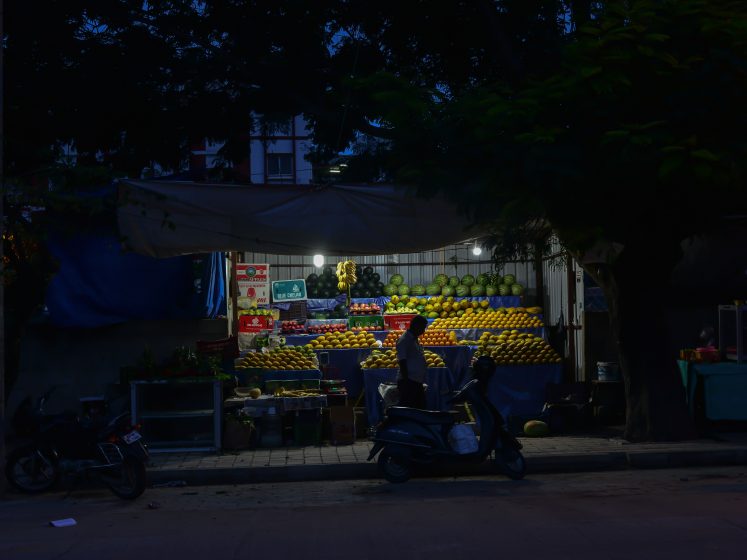
Trees in these older parts of the city are not without threat, though. Old city plans incorporated trees into their fabric. New plans do the opposite—they avoid leaving space for trees on roads. Trees are considered unavoidable casualties in a time of focused infrastructure expansion. The push of a modernizing city for an overhead Metro led to hundreds of trees on some of these roads being marked for felling several years ago. Sustained campaigns by civic groups and local residents saved many of these trees. The concrete pillars of the Metro tower over the traffic, but the rows of trees flanking the Metro line on both sides, saved by civic protests, soften the visual look—and significantly reduce air pollution on these streets, making it easier for residents and travellers to breathe. Electricity transformers make their mark on the overhead canopy as well, crisscrossing above tree branches. Sometimes entire trees or large branches are felled to make way for a new transformer. At other times, trees grow across these alien intruders, dropping branches on them during occasional storms, and leading to long power cuts.
Long term residents, used to living with trees, may complain about these minor inconveniences, but are rather tolerant of them, preferring to live with the occasional pitfalls of having trees to the alternative. Even service personnel adapt to the daily presence of trees on the road. It is a fairly common sight to see telephone wires coiled around trees, stored in hollows, or hanging on branches—while workers and street vendors often hang their belongings or lunch bags on a convenient shaded branch, or tuck them into nooks between branches, to be retrieved at their convenience.
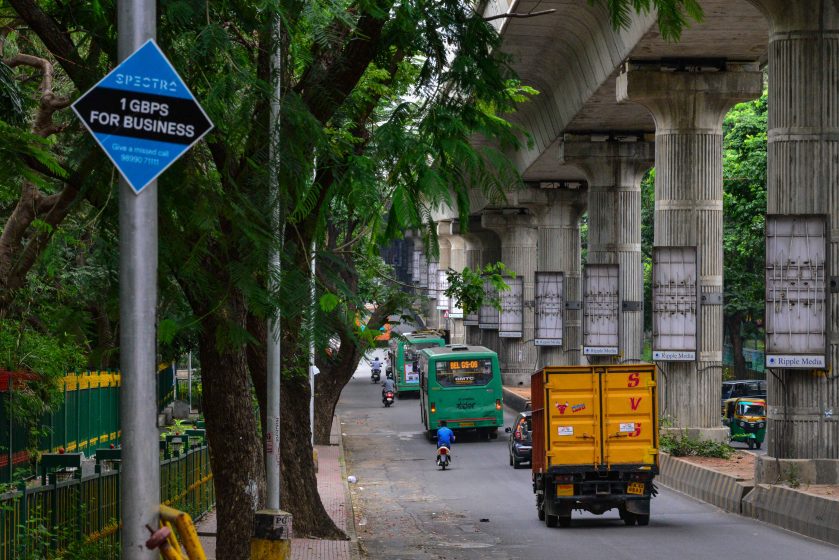
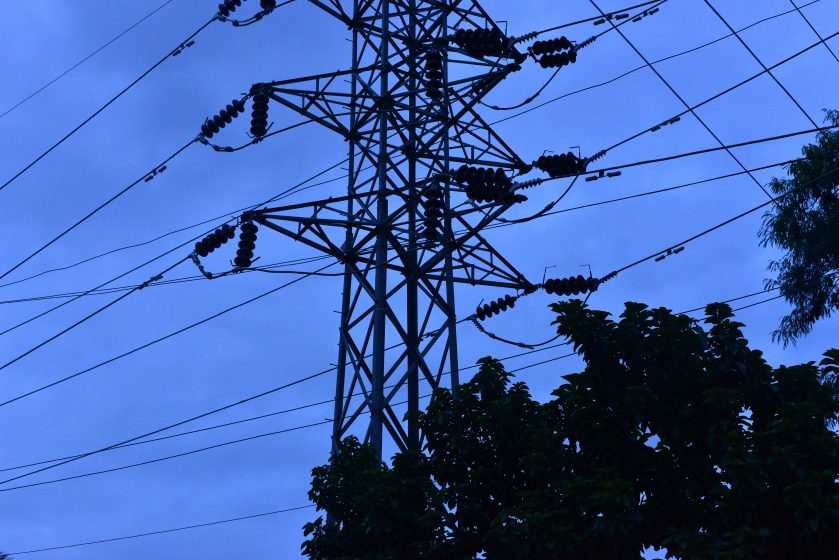
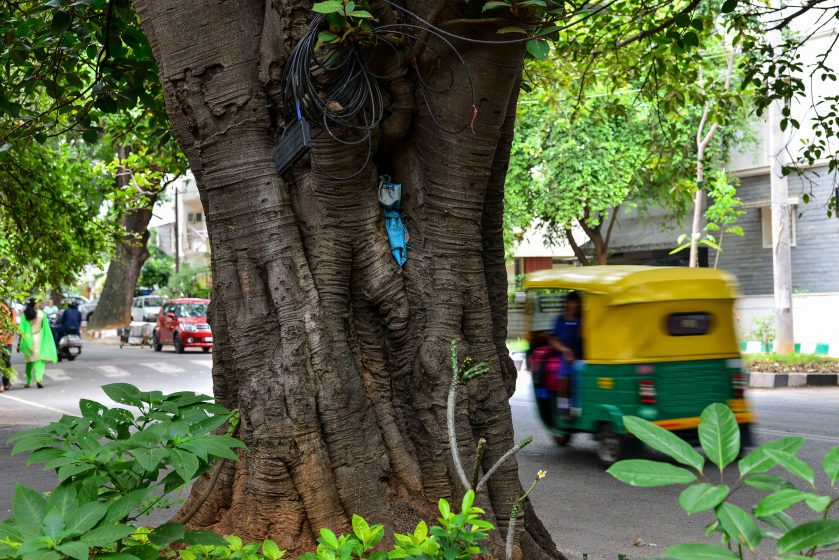
Residential areas within the same south Bangalore neighbourhood, with smaller roads, prefer a different kind of tree. It is more likely to find fruiting trees and those with sweet scented flowers, planted by residents who care for them personally. Trees form a characteristic component of these neighbourhoods. The canopies of trees often connect, forming a seamless canopy, teeming with biodiversity: birds, butterflies, ants, squirrels and monkeys. Cars—from the small to the expensive—are parked under the shade of roadside trees. Flower vendors sell their garlands in the morning, to be attractively wound around braided hair, or carried home or to the temple, for esteemed rituals of daily worship.
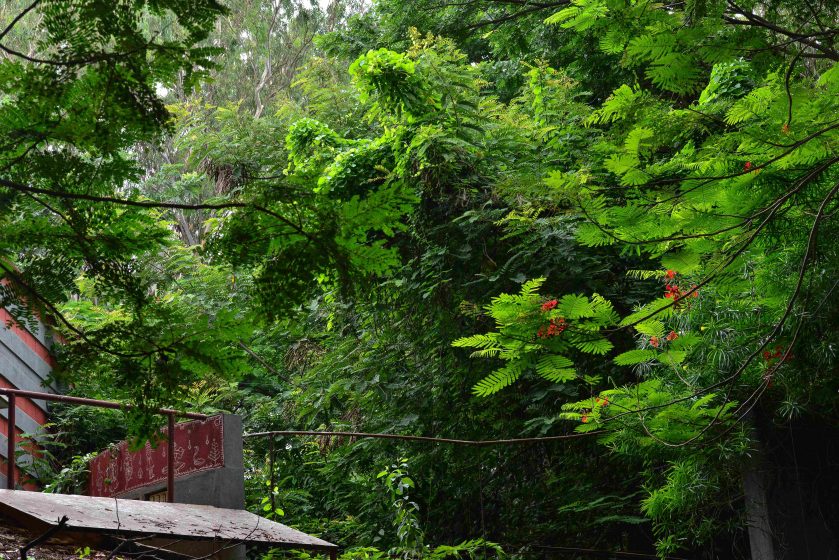
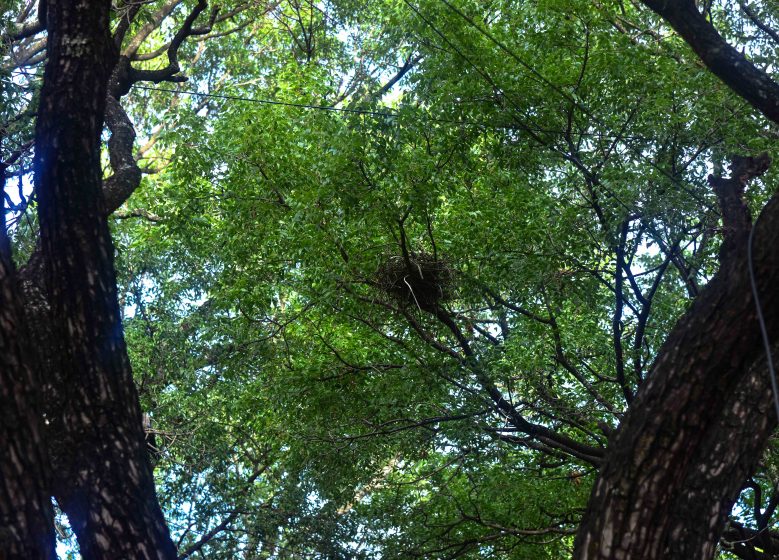
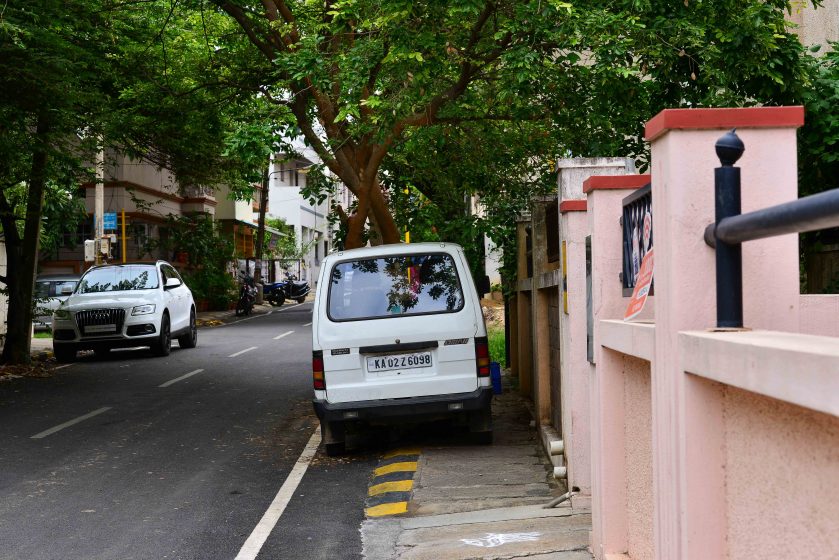
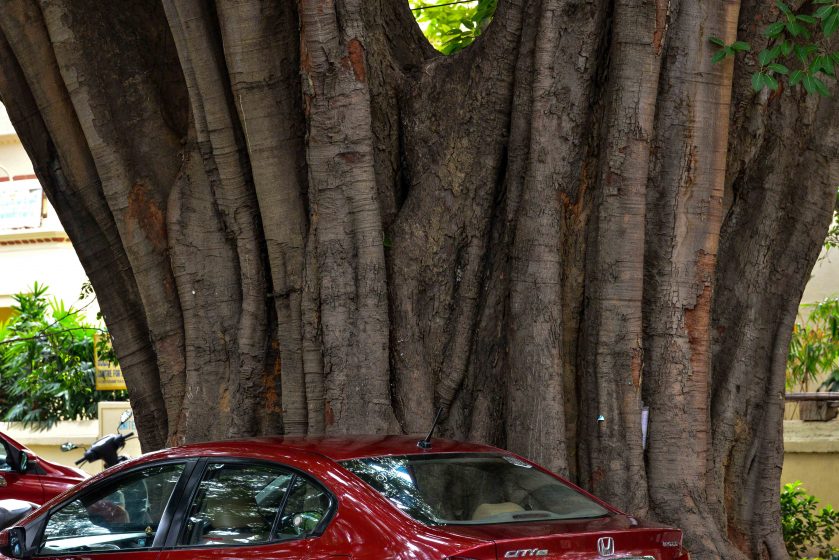
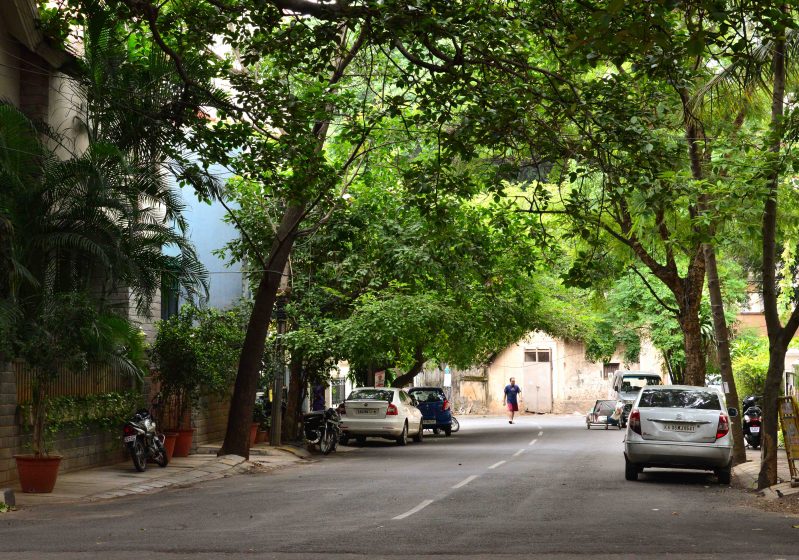
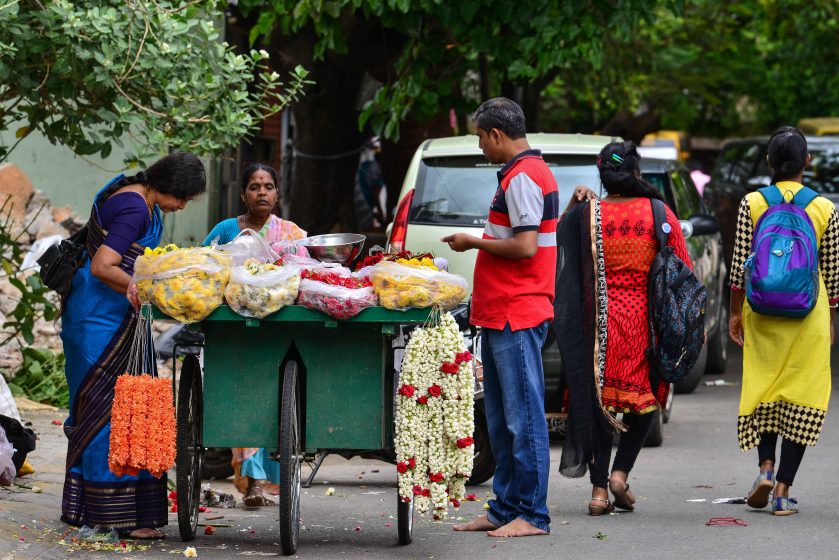
Dystopia hits when you travel further out of the city, moving into its peri-urban fringes. The outer fringe of Bangalore is an agglomeration of villages, some of which can trace their past history as far back as far 1200 years. The trees found here are largely native, or naturalised through centuries of local presence. A mix of sacred Ficus species like the banyan and peepal, and large fruiting trees like the mango, jackfruit, and tamarind, whose produce is used locally. Yet as the city expands its presence into the hinterland, the fruiting trees are often the first casualties. Of 43 wooded groves of fruiting trees in the south-eastern periphery of Bangalore, we found only 3 that continued to be protected—the rest were either completely denuded of trees, or severely degraded—with several trees removed or felled. Sacred trees are often the last to be left standing. Even one of these sprawling keystone Ficus trees can provide refuge to a number of threatened urban fauna – bats, monkeys, even the endangered slender loris.
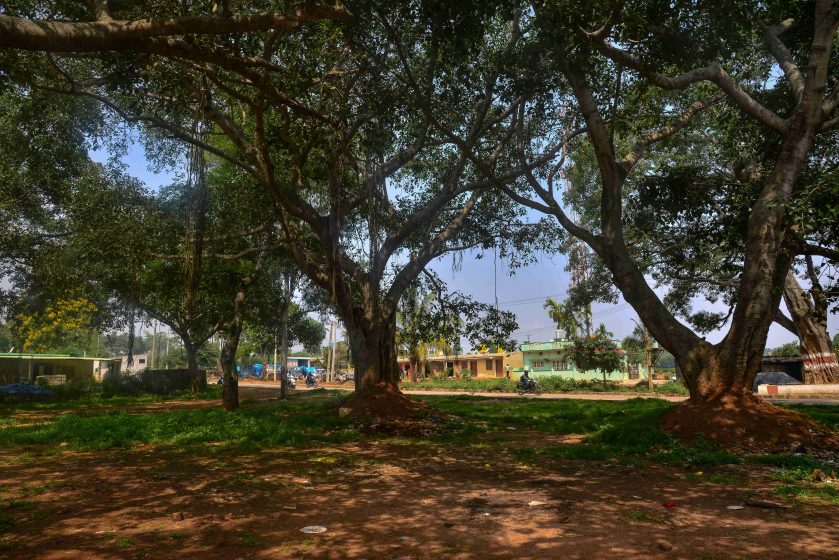
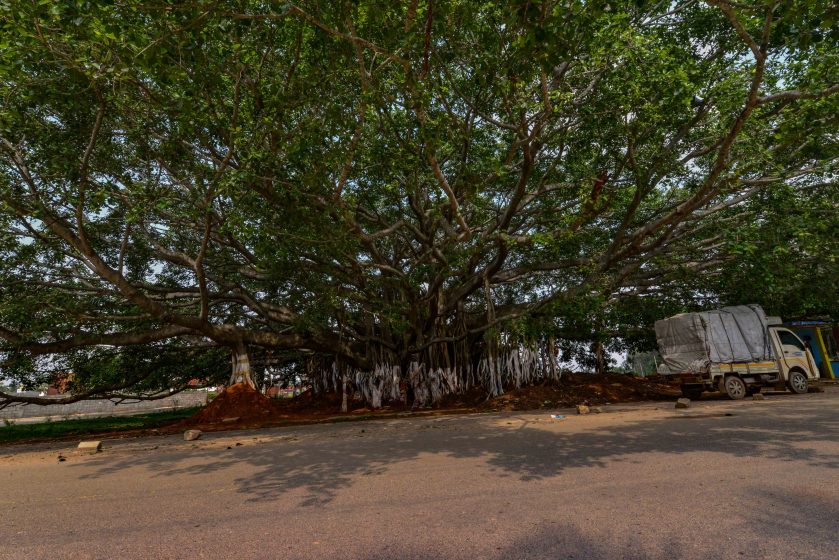
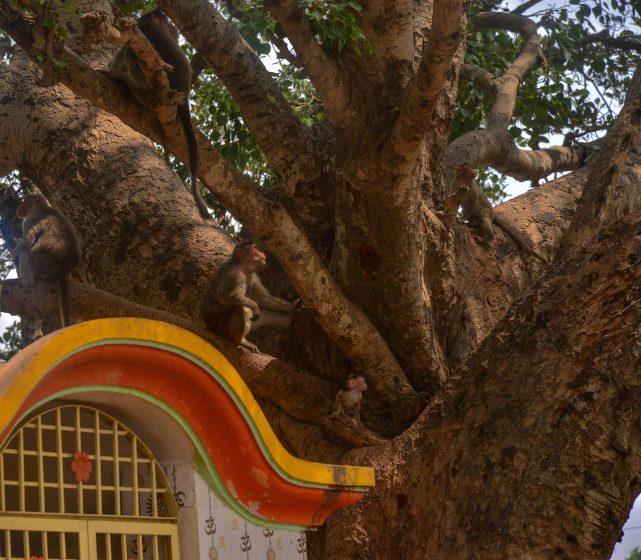
Yet even the sacred is not completely safe from the threat of urban expansion. The Maduramma temple of Huskur, at the south-eastern periphery of Bangalore, provides an example of the expansion of the built construction of the temple, at the expense of the grove of trees that once surrounded it and contributed to its sacred identity. A historical temple of great antiquity, the front of the temple is now largely concreted, whereas the areas to the back, more protected from visitors, are still green.
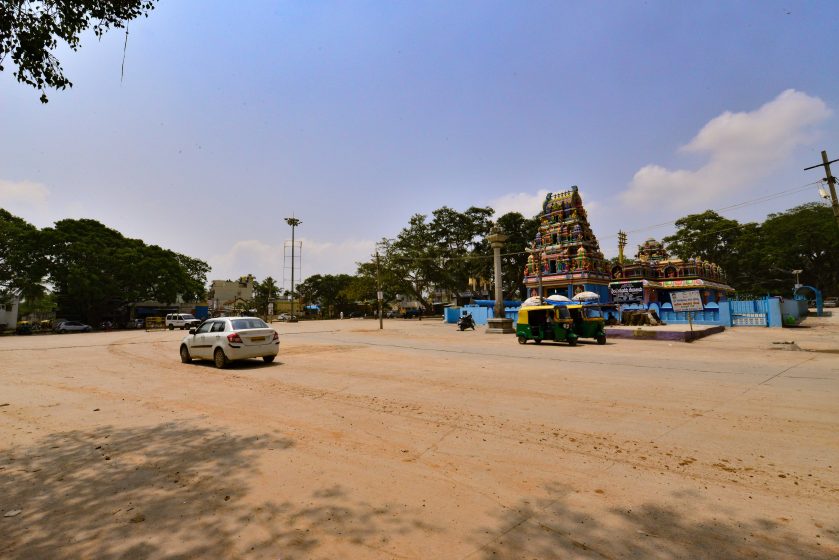
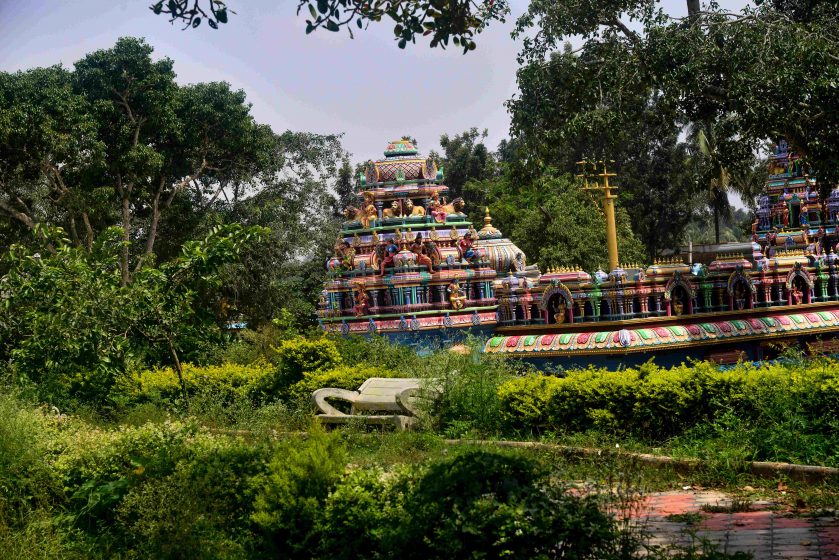
Dystopia lurks close by. As urban construction expands in the peri-urban, denudation continues at a frenzied pace. Urban planning in the periphery is not driven by planners. It is driven by a motley mix of real estate agents, large builders and land owners, each seeking to maximise the profit they can make from the tiniest patch of land. Land prices have skyrocketed more than 20-fold in the city periphery in 10 years.
This is no city for trees. Instead of wide tree lined avenues connected by parks, the aerial roads of the city periphery actively discourage trees. Municipal officials create informal restrictions discouraging the plantation of trees on sidewalks—ironically, in anticipation of future civic protests at the time of road widening, when these trees may need to be felled. Instead, saplings are squeezed into absurdly tiny spots in the central median, where they struggle to survive. Apartments and residences around these large roads jostle for space with shops and commercial buildings. Apart from an occasional ornamental, there are hardly any trees to be seen. These areas present a stark difference from the scenic green vistas of Cantonment and south Bangalore. The city periphery is dystopic indeed, with some of the highest levels of pollution, dust and breathing disorders—an obvious corollary to the absence of trees.
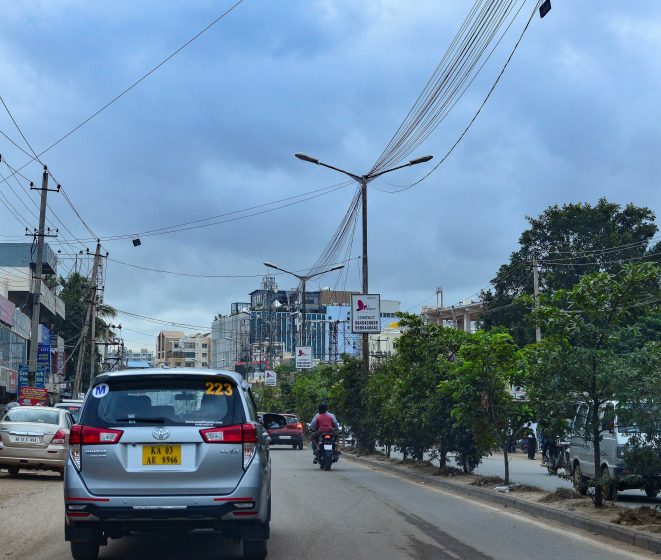
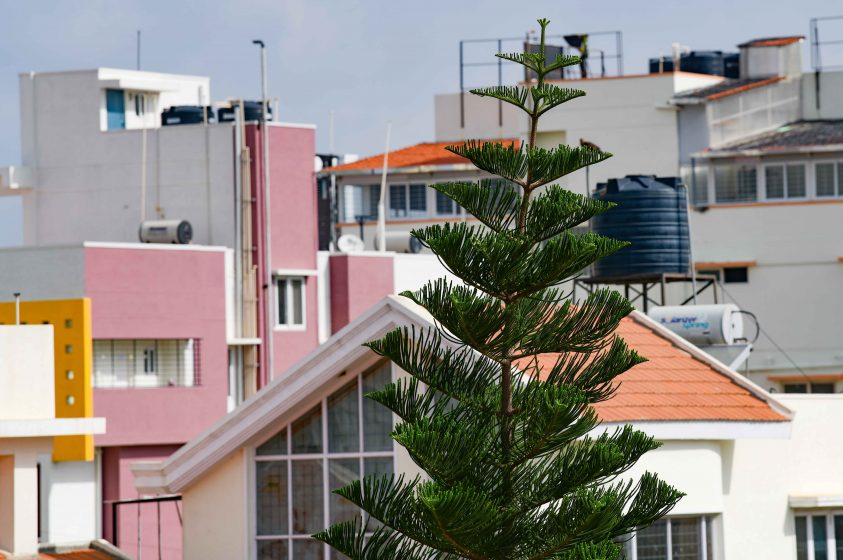
Secular or sacred, domestic or dystopic, street trees play an important role in our daily lives. As urban residents, we only too obviously need trees for shade, pollution control, fruits, and flowers. But trees are also part of the daily lives of city residents, giving localities a sense of identity—characterising gentrified, commercial, residential and peri-urban neighbourhoods in very different ways. The importance of street trees in making a city liveable lies in plain sight, and is yet hidden from our eyes. The diversity of social and ecological spaces that trees inhabit characterise the lives of Indian cities. In some places they are sacred, in others disciplined, in still other spaces struggling to get a toehold for survival.
The lives of street trees are emblematic in many ways of the multiple entanglements that characterise the nature-society dialectic animating the ever expanding urban in the global south—entanglements that pull together the past and the present, the secular and the sacred, and the global and the local.
Understanding the role of street trees in our daily lives helps us to disentangle the multiple processes, drivers and mindsets that shape Bangalore, in the past and present. Such an understanding might help us generate valuable insights to build a more sustainable future for Nature in the City—insights that can then inform purposeful collective action to chart a course away from the dystopia lurking around the peri-urban corner in Bangalore. Fortunately, the vision of a city built around trees, developed by earlier planners and bureaucrats, does not lie too far in the past. Indeed, as interviews with officials such as Seturam Neginhal, instrumental in the plantation of 1.5 million trees in Bangalore 50 years ago, reveal: these officials were well aware of the importance of street trees in our daily lives. It is that reflective attention and awareness that we must seek to reclaim.
Suri Venkatachalam and Harini Nagendra
Bangalore
about the writer
Harini Nagendra
Harini Nagendra is a Professor of Sustainability at Azim Premji University, Bangalore, India. She uses social and ecological approaches to examine the factors shaping the sustainability of forests and cities in the south Asian context. Her books include “Cities and Canopies: Trees of Indian Cities” and “Shades of Blue: Connecting the Drops in India’s Cities” (Penguin India, 2023) (with Seema Mundoli), and “The Bangalore Detectives Club” historical mystery series set in 1920s colonial India.


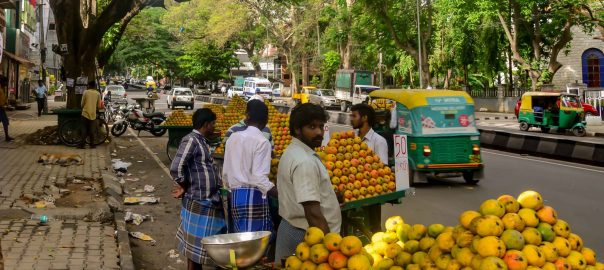
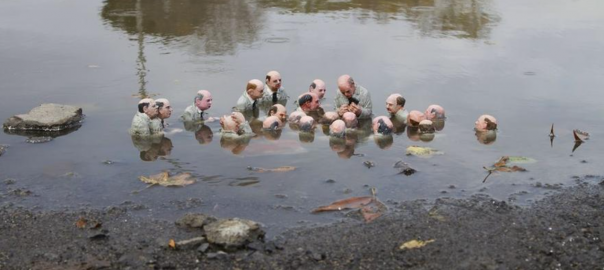
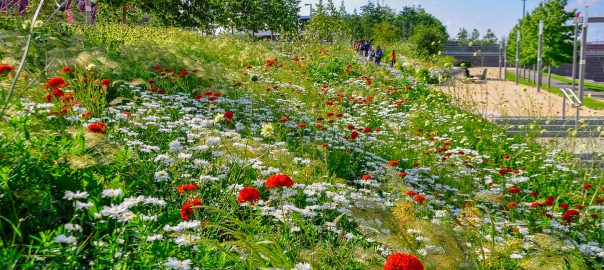

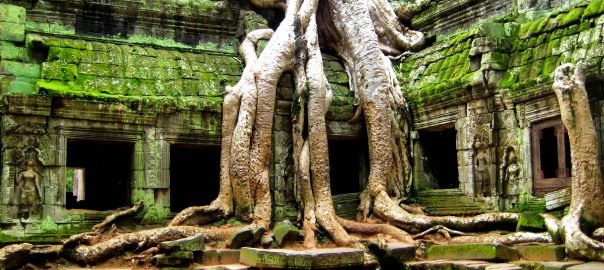
Leave a Reply